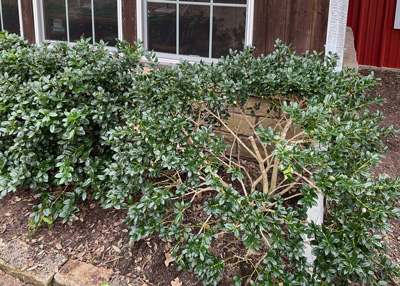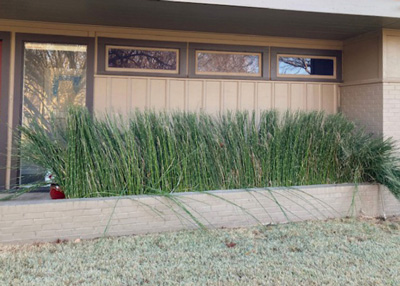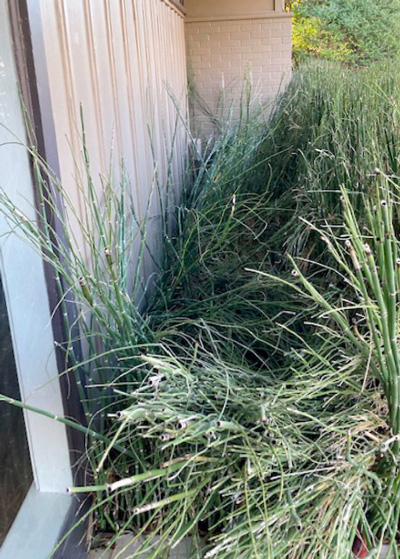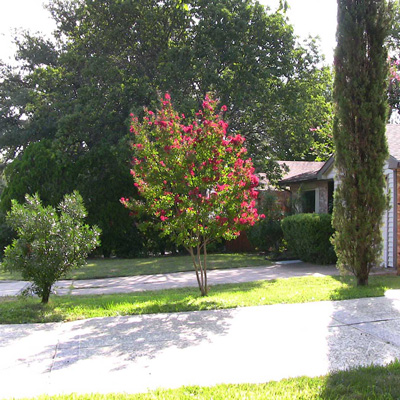Q&A – Ask Neil: January 5, 2023
(Please read these instructions carefully.)
Before you post your question, please look at recent issues to see if someone else has already asked it. You might find your answer there.
How to submit your question…
• Click the link provided below to post your question. After you submit your question, a new window will pop up giving you the address to which you can e-mail a photo to accompany your question. Clear, medium-resolution photos. (Try to avoid low-res thumbnail photos, please, in case I have to zoom in to see things.)
• Click here to post your question.
• Please only post your question one time.
• One question per reader, please.
• Please use this only for posting questions – not for standard emails.
• Watch for your answer in the following week’s e-gardens.
• I choose those of greatest general interest. For example, plant IDs seldom make the cut.
• I must have your first name or initials.
• I must have your city or county. (Texas is a very large state.)
QUESTION 1
WILL DWARF BURFORD HOLLY FILL IN?
Question: I lost limbs from my dwarf Burford holly during last summer’s drought. I just finished trimming out the dead branches. Do you think it will fill in, or should I just replace it? Terry C., Dennis in Parker County.

Answer: It will fill in very quickly. I might remove that one stub that is left and perhaps do some light trimming of the rest of the branches to encourage them to send out new shoots this March and April. Apply an all-nitrogen fertilizer in early March and keep it watered deeply. You’ll be amazed at how quickly it will rebound.
QUESTION 2
WHAT SHOULD BE DONE WITH A 60-YEAR-OLD TEXAS RED OAK WITH ROOT FUNGUS?
Question: I have a 60-year-old Texas red oak with root fungus. Large limbs have been dropping for 12 years. Three different arborists have looked at it. One said I should have it removed. One said to wait and see. One said to fertilize it. It shades a mature Bloodgood Japanese maple and fern bed. What would you suggest? Jon M., Dallas.
Answer: Begin with a confirmation of what specific “root fungus” is involved. That will probably require sending a sample to the Texas Plant Clinic at Texas A&M. They will charge you for the diagnosis, but you can’t treat for an unknown ailment without their help. Second, put your faith in a certified arborist. There are many in the Dallas area. I rarely send people specifically to an advertiser, but I will tell you that my friends (and advertisers) at Arborilogical Services (see ad this page) have award-winning specialists who can assuredly help you. One of them has his Master’s degree in plant pathology specializing in oak wilt. Without a photo and probably without seeing the tree on site, I can’t get any closer to a good answer for you.
QUESTION 3
DO I HAVE TO CUT MY HORSETAIL REED TO THE GROUND TO CORRECT THE WINTER DAMAGE?
Question: The wind and cold weather did a number on my horsetail reed. It is laying down on the backside and pushing the front portion in all directions. Do I have to cut it back to the ground? Francis B., Fort Worth.


Answer: There is no way to stake it and give it its former stem strength. My opinion is that you need to trim it off at 2-3 inches and apply an all-nitrogen fertilizer around March 1. Keep it watered deeply all season long, winter included.
QUESTION 4
WHAT SHOULD I DO WITH A KIEFFER PEAR THAT BLOOMS IN EVERY MONTH EXCEPT JULY?
Question: I have a crazy Kieffer pear that is 10 years old. Over that time it has had blooms in every month except July. This year we had a nice small crop of pears in July, and when the cold arrived a few weeks ago it had more pears. Do I need to be doing anything differently? Don H., Kingwood, Harris County.
Answer: Pears flower when they come out of dormancy. That’s usually in spring when they come out of winter, but it can also be in fall when they come out of heat-induced summer dormancy. There is nothing you can do to change any of that. Your tree will be fine.
QUESTION 5
WHAT IS THE BROWN GROWTH ON STEMS OF MY TOMATOES?
Question: I have several Celebrity tomato plants growing in my greenhouse. Some have this brown crust growing on their stems. What is it, and what should I do about it? Bredt W., Azle, Parker County.

Answer:
This was a mind-stretching question and I had to reach out to my 45-year friend Dr. Jerry Parsons, Prof. Emeritus with the Texas A&M system. Jerry and I began work with the Extension Service about the same time. He has forgotten more about vegetables than I ever knew. Here’s what he wrote back:
“I think these are egg casings of already “hatched” insects, perhaps scale. Notice on the wonderful image on the upper stem behind the green fruit clusters that it seems to get itself tucked into out-of-the-way places. Note there is a mass of “unhatched” eggs. The eggs are plump and rounded versus the tattered look of the remains farther back down on the stem. Whatever this is, it is spreading upward on the stem. To stop this without damaging the plant or fruit, I’d recommend using a Neem oil spray or a product containing Spinosad directed at the head of this spread on the upper part of the stem. It would not help to spray the deserted “egg” casings. Both of these controls are organically approved and won’t harm plants or fruit.”
Again I say, “Thanks, Jerry!” If you’re in the San Antonio area tune in his weekly radio program. Anywhere, scan his great website. https://www.plantanswers.com/
QUESTION 6
WHEN SHOULD WE BEGIN TO TRIM BACK FREEZE-DAMAGED BRANCHES FROM THIS YEAR’S CHRISTMAS COLD?
Question: When should we be trimming out the freeze-damaged growth that resulted from the extreme cold of two weeks ago? Cindy P., San Antonio.
Answer: You are premature in thinking about trimming. Scratch the twigs of plants in question. If they are still moist and green the plants will be putting out new leaves. If they are dried and brittle, that part of the plant has frozen. But the damage could be progressing on down the trunks. See my story on this topic this issue.
QUESTION 7
IS IT TOO LATE TO PLANT BEARDED IRIS BULBS?
Question: Is it too late to plant bearded iris bulbs? I was given some from my mother a couple of months ago. They have been in the box on the counter in our kitchen and haven’t been opened. If it’s too late to plant them, what can I do with them? Rachel M., White Settlement, Tarrant County.
Answer: You need to plant them as quickly as possible. If they are bearded iris, you have roots, not bulbs. They need to be planted before the green tops turn completely brown. If you have boxed bulbs you have Dutch iris and they certainly need to be planted immediately. They need time to establish roots so they can bloom this spring.
QUESTION 8
SHOULD I HAND-WATER A NEW BUR OAK AND CRAPE MYRTLE PLANTED IN OCTOBER? I SOAKED THEM BEFORE THE HARD FREEZE.
Question: What is your suggestion about hand-watering new trees (bur oak, crape myrtle) planted in October? I soaked them before the extreme cold. Should I be watering them again now that it’s warmer? How often? Jose B., Dallas.
Answer: Water whenever the soil begins to dry out. There is no specific interval in winter because the weather is so variable, but if it hasn’t rained for a week, it certainly won’t hurt for you to water deeply.
QUESTION 9
HOW CAN I STRAIGHTEN MY RED ROCKET CRAPE MYRTLE?
Question: My 5-year-old Red Rocket crape myrtle has developed a slight lean in the last few years. I’m planning on digging and replanting it in February to get it vertical. Do you have any other advice? Steve R., Arlington.

Answer: I do not have a clearcut answer. If you decide to dig and replant it, use a sharpshooter spade and try to finish the job by February 1. Be patient in the digging so you can hold the soil intact around the root system.
However, crape myrtles are eager to send up new sprouts from their bases. They are, after all, shrubs by their genetic nature. I would encourage several such shoots to develop on the uphill side of your plant. As they grow, you would eventually be able to remove the one “downhill” trunk when the time came. Apply an all-nitrogen plant food and water regularly to promote vigorous growth.
QUESTION 10
OUR NEIGHBOR CUTS OUR LIVE OAK BACK TO THE FENCE LINE EACH FALL. WILL THAT DAMAGE THE TREE?
Question: Our next-door neighbor keeps cutting our live oak back to our fence line each fall. Is this going to damage the tree? Brenda S., Wichita Falls.
Answer: They apparently don’t want the shade that your tree is going to cast. Sadly, that is their right. It won’t hurt the tree at all. As the years pass it will become more and more misshapen, but we can hope that your neighbor will change his mind.
